After countless turns, Eclisse turns 57
Vico Magistretti's lamp for Artemide is small in size, but still has a big appeal.
Eclisse – a play of light and shadow, of concealment, cast in geometrical round forms. It is deceivingly simple, with timeless appeal. Humble in size, yet so iconic.
Eclisse was created by Vico Magistretti for Italian furniture and lighting company Artemide. ‘Fondazione Vico Magistretti’ and the Repertorio both date the origin of the lamp to 1966, so 2024 will mark the 57th anniversary of this famous piece of work.
-
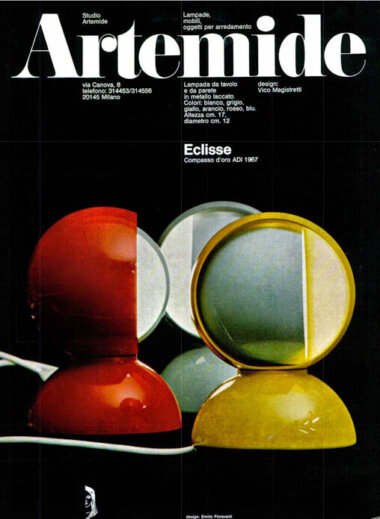 An advertisement from the seventies (from the Palainco archive).
An advertisement from the seventies (from the Palainco archive).
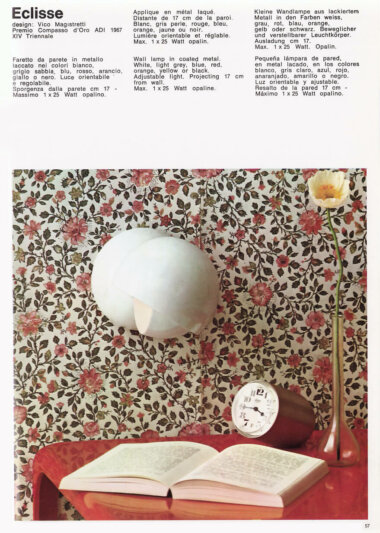 A page from an Artemide catalogue (from the Palainco archive).
A page from an Artemide catalogue (from the Palainco archive).
-
The small light was envisioned as a lamp for a bedside table, but as demonstrated in the Artemide catalogue (the image on the right) it can also be wall-mounted.
Immediately after the introduction, Eclisse was internationally acclaimed for the originality of the design, not only as a light fixture but also as a compact object with beautiful proportions. It was awarded the Compasso d’Oro in 1967, the year it was launched on the market.
-
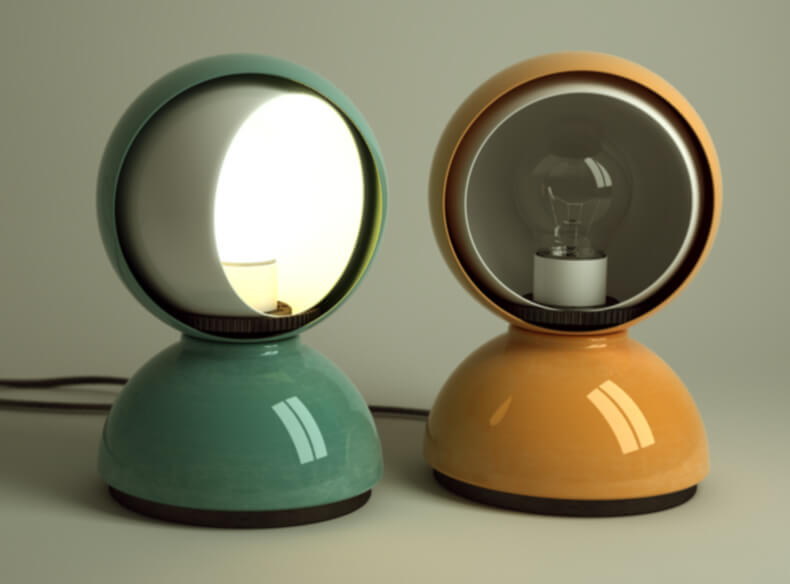 Over time the Compasso d’Oro has been awarded four times to Vico Magistretti - the first one he received in 1967 for Eclisse (source: Alvydas Jatkialo).
Over time the Compasso d’Oro has been awarded four times to Vico Magistretti - the first one he received in 1967 for Eclisse (source: Alvydas Jatkialo).
-
As an Italian designer, architect and lecturer Vico Magistretti (1920–2006) was among those responsible for the international recognition of Italian design. He was born into a family of architects and in 1945 he obtained a degree in architecture from the Polytechnic University of Milan. Magistretti became famous for cooperating with prominent producers like Cassina, De Padova, Flou, Oluce and Kartell.
-
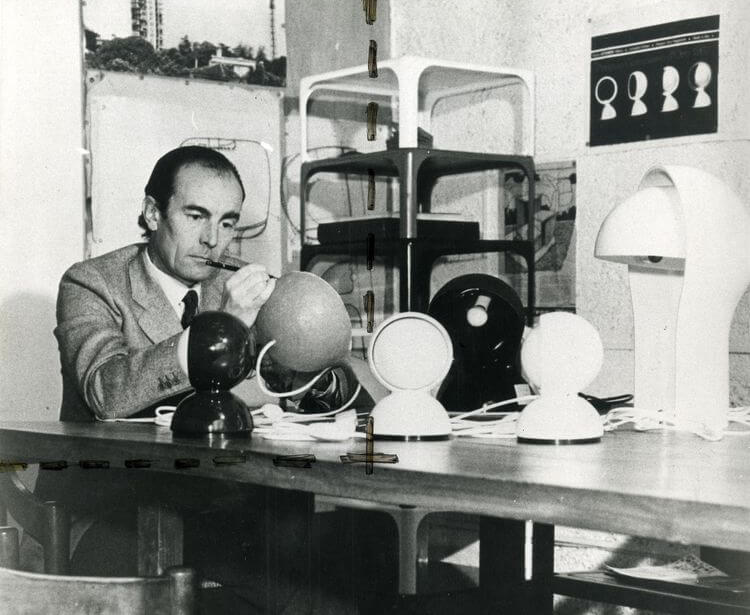 Vico Magistretti in his studio in Milan (source: Fondazione Vico Magistretti).
Vico Magistretti in his studio in Milan (source: Fondazione Vico Magistretti).
-
Vico Magistretti focused on close collaboration with producers and craftspeople. He never produced finished designs; they always came about as a result of discussion and cooperation. As he explained in Design Diffusion News, in April 1998: “I never spend a lot of time designing something, because I firmly believe that the fine details emerge from the use of the article, they are the logical consequence of the idea. The details are the easiest bit.”
He sketched his ideas non-stop and everywhere. And that was exactly how Eclisse first saw the light of day. Vico Magistretti, in the same article in Design Diffusion News: “I was in the subway and designed on the back of the metro ticket the features of the so-called blind lantern, the robbers’ lamp.”
-
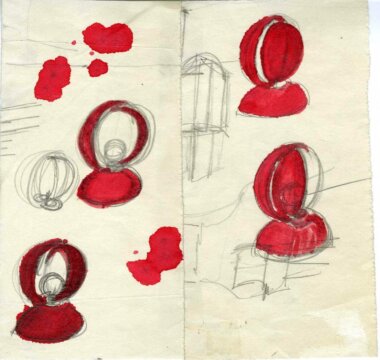 Sketches of Eclisse by Vico Magistretti (source: Domus).
Sketches of Eclisse by Vico Magistretti (source: Domus).
He described Eclisse as “blind lantern, the robbers’ lamp’” because he was thinking of Jean Valjean, the protagonist of Les Misérables by Victor Hugo. We were unable to find direct evidence, but we think Magistretti referred to the passage where “three squads of agents and sewermen” are searching for protagonist Jean Valjean in the “subterranean drain of Paris”.
-
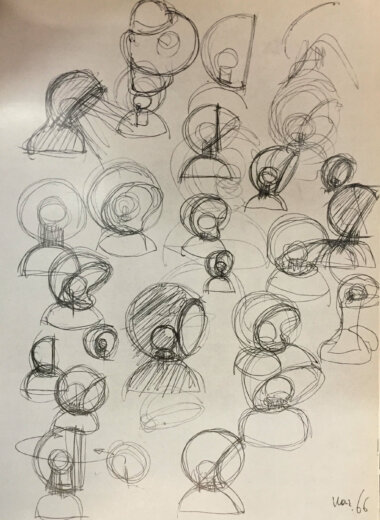
Some relevant passages from the book: “The sergeant in command of the patrol had raised his lantern, and the squad had begun to gaze into the mist in the direction where the sound proceeded. This was an indescribable moment for Jean Valjean. Happily, if he saw the lantern well, the lantern saw him but ill. It was light and he was shadow. He was very far off, and mingled with the darkness of the place.”
-
And when the patrol resumed its march, instead of separating into two squads and going in both directions, they left Jean Valjean behind: “Of all this movement, Jean Valjean perceived nothing, except the eclipse of the lantern which suddenly wheeled round.”
If the first quote could be considered inspiration, the second one could have been the trigger to design Eclisse.
-
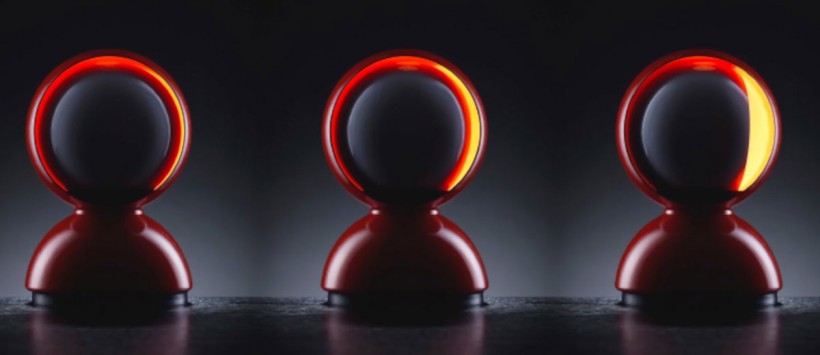 Users can rotate the hemispherical inner shade and can thus create an eclipse effect (source: Artemide).
Users can rotate the hemispherical inner shade and can thus create an eclipse effect (source: Artemide).
-
 As you can see in these modern interiors...
As you can see in these modern interiors...
Made up of a composition of three overlapping geometric shapes or, in other words, a single hemisphere repeated three times: a fixed exterior one, a mobile inner one (rotating on a pin), and the base. Eclisse allows you to cover its inner, luminescent sphere by rotating the lamp. The light can be gradually dimmed and even completely obscured, producing the effect of a total eclipse.
-
 ...Eclisse hasn’t lost its charm even after half a century (sources: AD & Dwell).
...Eclisse hasn’t lost its charm even after half a century (sources: AD & Dwell).
In an interview with Casamica, in February 1974, Vico Magistretti explained his personal unhappiness with the success of the design: “Eclisse has undoubtedly been very successful, a bit too much I would say: it has become so much part of the public domain that it has ceased to be mine. For this reason I do not like it anymore, perhaps because I do not like to be identified through an object.” There are clearly worse things to be unhappy about…
-
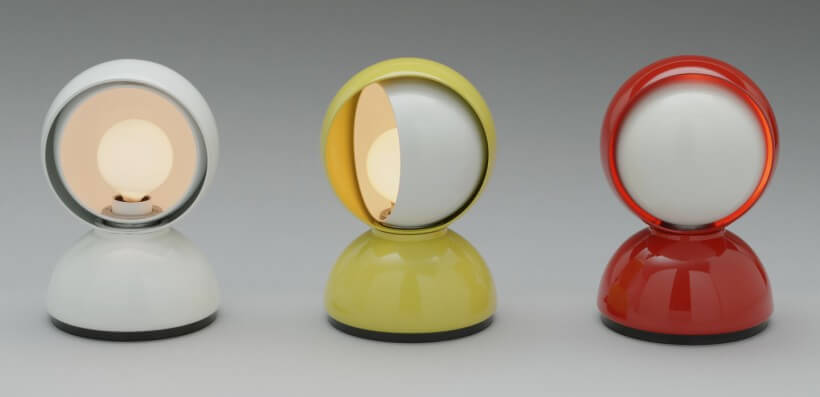 Eclisse is part of the permanent collection of the MoMA in New York (source: MoMA).
Eclisse is part of the permanent collection of the MoMA in New York (source: MoMA).
-
Following Magistretti’s death in 2006, his office was converted into a studio museum devoted to the study and propagation of his work. The museum is also home to a foundation dedicated to Magistretti, called ‘Fondazione Vico Magistretti’.
If you would like to be the first to read articles on designers and special designs, please subscribe to our newsletter.
-
- Literature: Les Misérables’ by Victor Hugo, Repertorio, Artemide, Casamica & Design Diffusion News.
- Address ‘Fondazione Vico Magistretti’: Via Conservatorio 20 in Milan.
Unless otherwise stated, all material is sourced and/or generated internally. All rights reserved.
- Text: Palainco, Koos Logger & Ingrid Stadler.
- Image sources: Artemide, Domus, Alvydas Jatkialo, Fondazione Vico Magistretti, AD, Dwell, MoMA & the Palainco archive.
The article and its contents may not be copied or reproduced in any part or form without the prior written permission of the copyright holders.
Published on: 15 July 2016